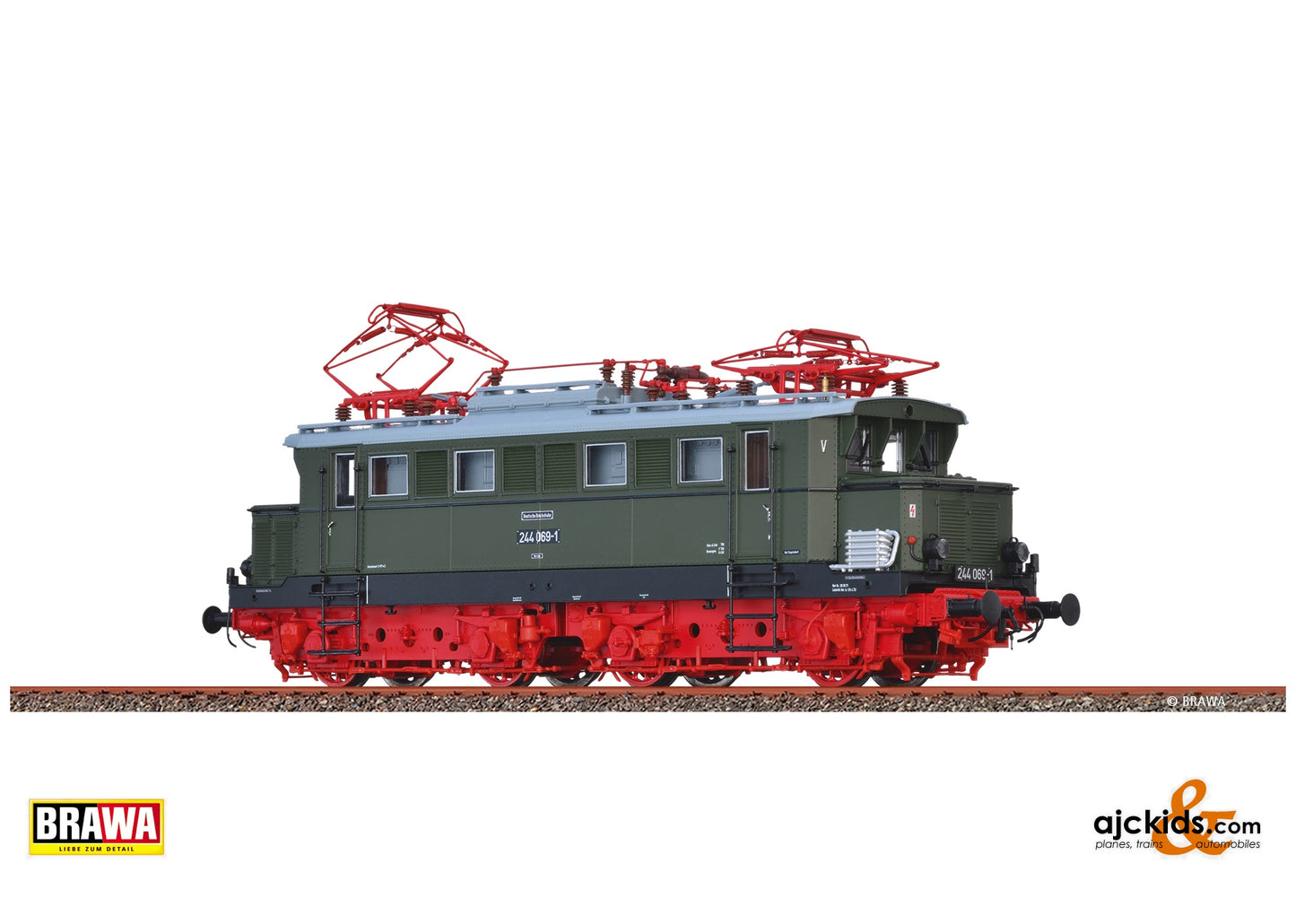Brawa 63120 - Electric Locomotive BR 244 DR
electric locomotive BR 244 DR
Company number: 244 069-1
model details
- Highly detailed housing
- Fine rivets and engravings
- Many extra details, e.g. handle bars, ladders and multi-part cooling coil
- replica of the driver's cab
- Finely detailed bogies with attached parts
- Extra attached brake cylinders, brake rods, sandboxes, Sifa, Peyinghaus bearings and track clearers
- Correctly reproduced and highly detailed roofs in normal and extended versions
- roof equipment with many extra details
- Free-standing roof cables
- Various insulators
- Different main switches
- Finely detailed pantographs
- Differently long roof walkways
- three-point bearing in the bogie
- Fine printing and varnishing
- Headlamp via LED with light change red-white, 3rd headlamp can also be switched off analogue
- LED lighting in the driver's cab and in the sound version also in the engine room
- NEM coupling socket with kinematics
- Analog models with Next18 interface
- Sound version (Brawa 63121): All light functions can be controlled digitally, including engine room lighting; optimized motor and load control for perfect running characteristics; excellent sound quality from the original sound, thanks to noise-free 16-bit technology with up to 8 independent channels; can be used in all common digital systems (DCC, SX1 and SX2, Motorola); sound decoder integrated on the main circuit board
- Model: pantograph type SBS 39; main switch type R 628; with 8 sandboxes; for the first time in the model with resistance brake (illustration differs)
Information about the model
At the end of the 1920s it became clear that the German Reichsbahn Company (DRG) would have to purchase new electric locomotives to speed up its freight transport. The desire to increase the maximum speed to at least 80 km/h could not be achieved with the most recently purchased series E77 and E75, as the conventional drive technology using rods and an additional wheel set did not allow higher speeds.
The positive experiences abroad and the two Bavarian EG 1 with Bo'Bo' bogie locomotives also convinced the DRG to deviate from the single-frame design. However, this plan was severely thwarted by the global economic crisis that broke out in 1929, which interrupted the costly electrical expansion of routes and thus there was no need for electric locomotives. The locomotive industry in Germany, however, feared that this procurement pause would mean that it would lose touch with current developments. They therefore set about developing a low-cost design at their own expense.
Under the leadership of Walter Reichel, a prototype was created at the Siemes-Schuckert-Werke (SSW) with the designation E44 70, later to become the E44 001. From the production of components for power generators, SSW was able to incorporate the experience of arc welding into locomotive construction, which led to significant savings in materials and production costs. The positive test results of this prototype convinced the DRG to develop the new locomotive type into a universal locomotive. The result was the first series-produced bogie electric locomotive in Germany, which can certainly be considered the prototype for the standard electric locomotives later developed by the German Federal Railway (DB).
Due to the war, the delivery of the locomotives approved for 90 km/h extended from 1933 until the post-war years, so that Henschel did not hand over the last one, the E44 187G, to the DB until November 29, 1954. The predominant distribution in central and southern Germany meant that after the Second World War around 100 locomotives remained in West Germany and around 50 in East Germany. The most noticeable design changes at the DB were the extension of the roof screens for accident prevention reasons and the equipment with Indusi.
EAN/UPC: 4012278631202



